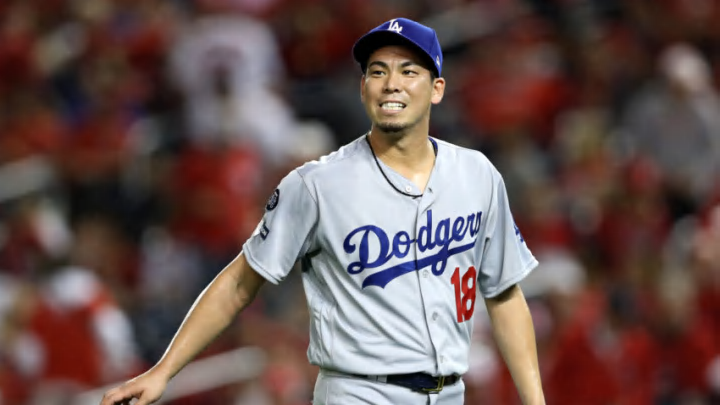Kenta Maeda doesn’t move the needle for a lot people, but what his acquisition symbolizes should make Minnesota Twins fans happy.
All offseason, the Minnesota Twins have needed to add starting pitching. They’ve mostly done the volume approach, signing Rich Hill, Homer Bailey and Jhoulys Chacin, but the clamoring for a bigger move continued.
The Boston Red Sox traded outfielder Mookie Betts and pitcher David Price to the Los Angeles Dodgers late Tuesday night. But it was ultimately a three-team deal, as the Twins got pitcher Kenta Maeda from the Dodgers and sent prospect pitcher Brusdar Graterol to the Red Sox.
Any Twins fan that has lamented a lack of spending was quieted by the signing of third baseman Josh Donaldson. Further lamenting about never giving up top prospects for win-now style pieces can also now be quelled.
Graterol was Minnesota’s No. 3-ranked prospect, and the 83rd-ranked prospect in all of baseball (via MLB Pipeline). Eric Longenhagen of FanGraphs has instantly put Graterol at the top of Boston’s prospects rankings, which says as much about the Red Sox system as it does about Graterol himself.
Graterol had Tommy John surgery in 2016, and a shoulder issue slowed him last year. He was slated to start the season in the Twins’ bullpen, but his future is seen as a starter. His ceiling is high, but arm issues at such a young age are a concern.
Maeda had a 4.04 ERA with a 9.9 K/9 and a 3.0 BB/9 for the Dodgers last season over 37 appearances (153.2 innings, 26 starts). He has preferred to work as a starter, but the incentives for innings and starts made in his contract seems to have motivated the Dodgers to limit his work.
Maeda strikes out plenty of batters, but he also causes weak contact. Last year he was in the 96th percentile in average exit velocity allowed, and he was in the 95th percentile in hard-hit rate allowed.
For teams in a win-now window, trading prospects for players who bring current value is palatable and not as risky as can be thought. Graterol’s future value is easily offset by adding Maeda’s stability to the top half of the rotation.
Let’s compare Maeda’s last three seasons to someone he’ll join in the Twins’ rotation:
- Kenta Maeda-2017-2019: 4.03 ERA, 3.77 FIP, 10.1 K/9, 2.8 BB/9. 101 ERA+, 3.61 K/BB,1.2 HR/9
- Jose Berrios 2017-2019: 3.80 ERA, 3.87 FIP, 9.0 K/9, 2.7 BB/9,117 ERA+, 3.35 K/BB, 1.1 HR/9
Maeda and Berrios are not all that different, and Maeda comes with a 3.31 ERA over 32.2 career postseason innings.
If Graterol eventually becomes an ace, or one of the best closers in baseball, then there might be some eventual regret about trading him. But it isn’t about future impact or value for the 2020 Minnesota Twins, and trading a top-end prospect for a veteran starter is the next of what could be many symbols of wanting to maximize a win-now window.
